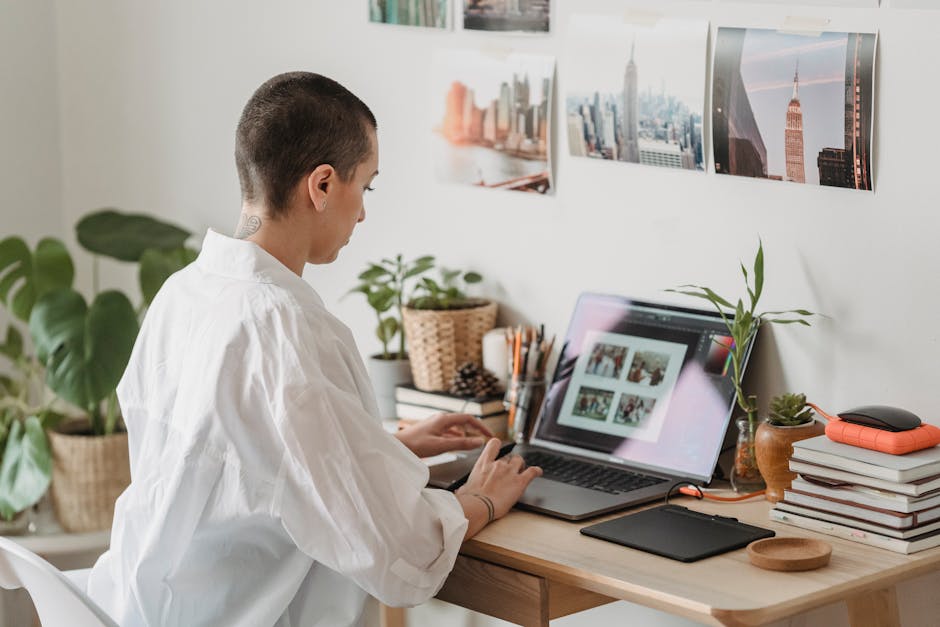How to Edit Travel Photos Like a Pro Using Lightroom

Editing travel photos to look professional can elevate your travel memories and make them stand out on social media or in personal photo albums. Lightroom, developed by Adobe, is a powerful tool that offers a range of features to enhance your images. By understanding how to utilize these features, you can transform ordinary travel photos into visually stunning works of art.
Understanding Lightroom's Interface
Lightroom's interface is designed to be intuitive, yet it offers a vast array of tools for detailed photo editing. Familiarizing yourself with its layout is the first step toward mastering this software.
The main sections of Lightroom include the Library and Develop modules. The Library module is where you organize and manage your photos. It allows you to import, export, and catalog your images effectively. The Develop module is where the actual editing happens. Here, you’ll find various panels like Basic, Tone Curve, HSL/Color, Split Toning, Detail, Lens Corrections, Effects, and Calibration.
Each panel contains specific tools for different types of adjustments. For example, the Basic panel includes sliders for exposure, contrast, highlights, shadows, whites, blacks, clarity, vibrance, and saturation. These are essential for making initial adjustments to your photo’s overall appearance.
Basic Adjustments
Begin by making basic adjustments to correct exposure and color balance. These foundational steps set the stage for more detailed editing later on.
- Exposure: Adjusting exposure helps correct any lighting issues in your photo. The Exposure slider increases or decreases the overall brightness.
- Contrast: This slider controls the difference between the lightest and darkest parts of your image. Increasing contrast can make your photo pop.
- White Balance: Use the White Balance tool to correct any color temperature issues. You can adjust the Temperature slider to make the image warmer or cooler.
- Highlights and Shadows: These sliders help recover details in the bright and dark areas of your photo.
Advanced Editing Techniques
After completing basic adjustments, move on to more advanced techniques that can significantly enhance your travel photos.
Tone Curve: This tool allows for precise control over the brightness and contrast in specific tonal ranges. You can adjust highlights, lights, darks, and shadows individually.
HSL/Color: HSL stands for Hue, Saturation, and Luminance. This panel lets you adjust these aspects for each color in your photo individually. It's particularly useful for enhancing specific colors without affecting others.
Split Toning: Use this tool to add color tones to the highlights and shadows of your image. It’s often used to create a stylized look or match a particular aesthetic.
Detail Enhancement
Adding sharpness and reducing noise are crucial steps in making your travel photos look polished and professional.
| Tool | Function |
|---|---|
| Sharpening | This tool increases the clarity of fine details in your image. Be careful not to overdo it as it can introduce artifacts. |
| Noise Reduction | This helps reduce graininess in your photos caused by high ISO settings or low light conditions. Adjust Luminance and Color sliders to find a balance between reducing noise and retaining detail. |
| Lens Corrections | This panel corrects distortions caused by lenses. Enabling profile corrections automatically adjusts for lens-specific issues like vignetting and distortion. |
Using Presets
Presets are pre-configured settings that can quickly apply a specific look or style to your photos. Lightroom offers built-in presets, but you can also create your own or download presets from other photographers.
Create Your Own Presets:
- Edit a photo to achieve the desired look.
- In the Develop module, click on the "+" icon in the Presets panel.
- Select "Create Preset" and name it appropriately before saving.
Exporting Your Photos
The final step is exporting your edited photos in a format suitable for their intended use. Lightroom offers various export options that allow you to customize file format, quality, size, resolution, and more.
Select "File" then "Export" from the menu. In the export dialogue box:
- File Settings: Choose JPEG for web use or TIFF/PSD for print quality.
- Image Sizing: Specify dimensions if needed; for social media posts use dimensions like 1080x1080 pixels for Instagram.
- Output Sharpening: Enable sharpening based on whether the image will be displayed on screen or printed.
Edit travel photos like a pro with these tips using Lightroom's powerful features. Understanding its interface and mastering both basic adjustments and advanced techniques will help you create stunning images that capture the essence of your travels beautifully.
